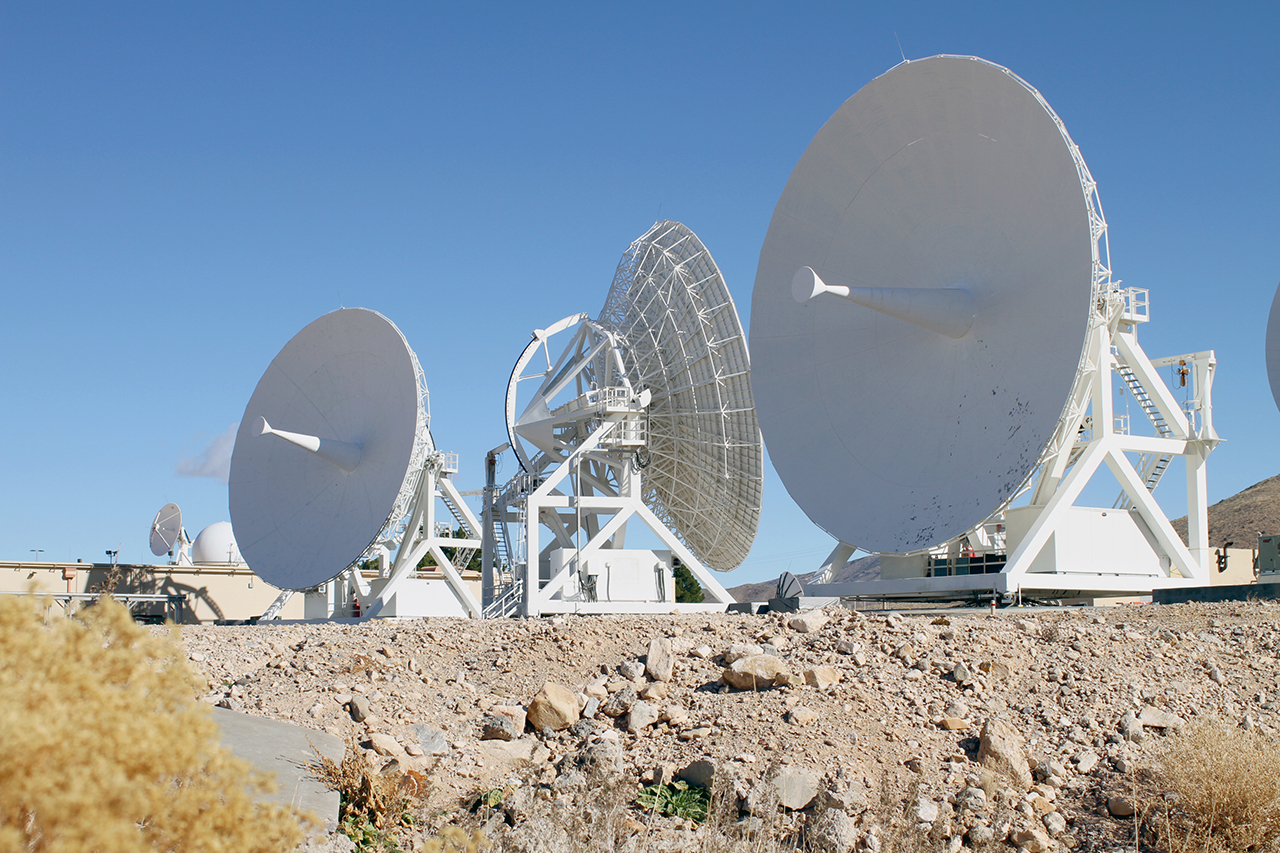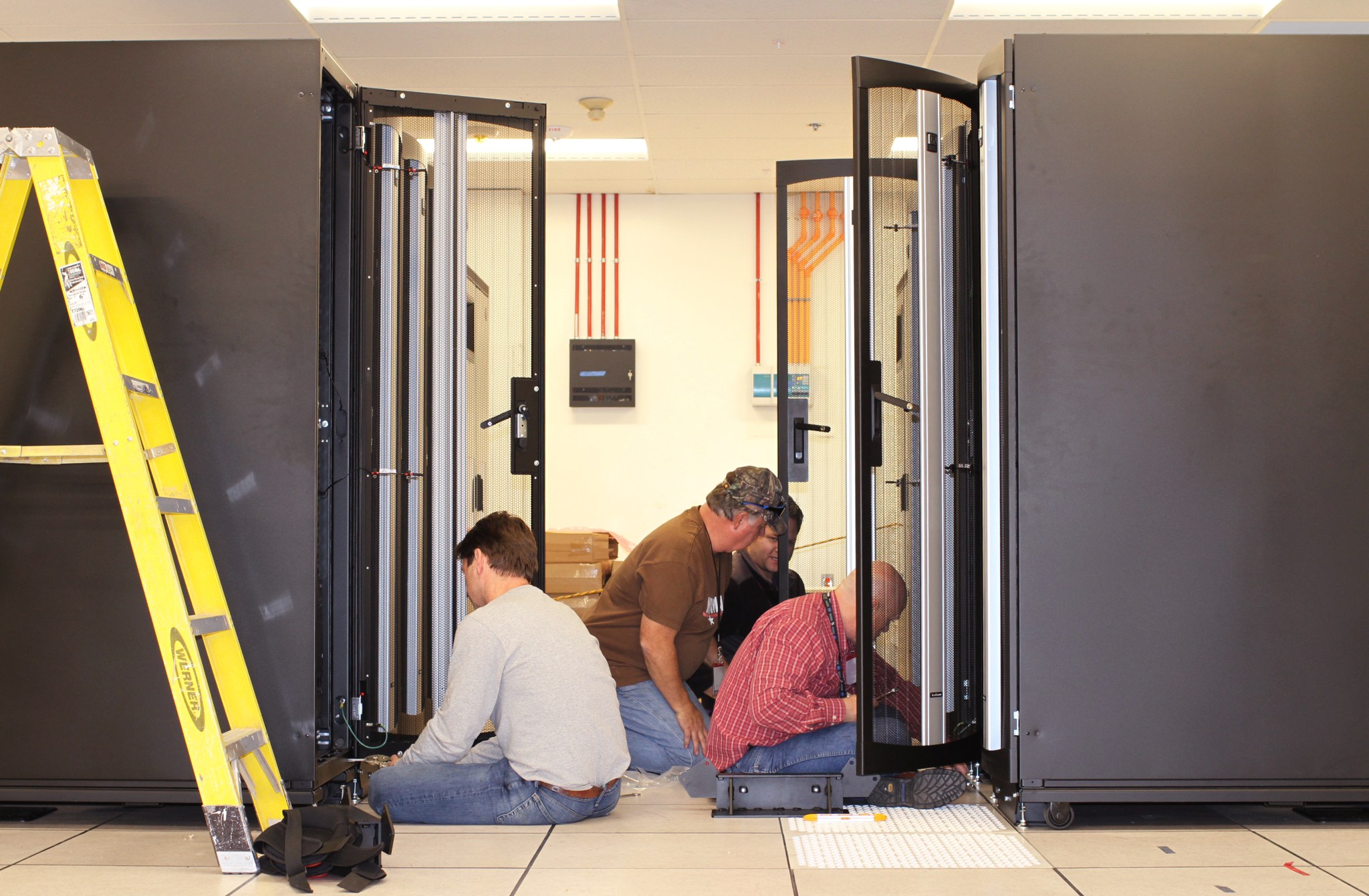From navigating the cosmos, to capturing stellar images, to communicating with astronauts, no mission can operate without the ability to transmit data. NASA’s Space Network (SN), a constellation of Tracking and Data Relay Satellites (TDRS) and ground-based antennas forges critical links between Earth and space, making exploration and discovery possible. The SN’s ground stations at the White Sands Complex in Las Cruces, New Mexico, are undergoing modifications which will make these links faster and simpler.
The Space Network Ground Segment Sustainment (SGSS) project is managing upgrades to SN ground stations which will increase data rates and volumes, improve data quality and user coverage, reduce maintenance requirements and extend the system’s longevity.
All of this means greater potential for science missions. On Earth, photo and video technology constantly advance to take higher resolution imagery, which then require higher data rates to send and stream that content. Similarly, missions are gathering more data and NASA communications systems must keep up. For example, the Hubble Space Telescope captures 844 gigabytes of science data per month (that’s 13 times the storage space on a 64-gigabyte iPhone). Hubble relies on the SN and its ground stations to get that data to Earth. Enhancements through the sustainment project could quadruple the rate of data that could be transmitted to Earth on a future, similar mission.
The sustainment project team began installation of new ground electronics and upgrades to both main mission and test antennas in 2018. The team recently completed installation of operator workstations and signal processing computers. Integration and testing is now underway. A test of one of the newly modified antennas showed that it successfully received downlinks from TDRS, and processed and displayed that data automatically. This is a big step on the road to completion.
“SGSS has made significant strides toward the completion of systems integration,” said Tom Gitlin, SGSS’s deputy project manager, technical. “We have completed provisional acceptance testing. Our focus will be on maintaining our progress to the first operational readiness review in fall 2019.”
Provisional acceptance testing determines whether the system meets functionality and performance requirements. Operational readiness reviews determine not only if the technical requirements are met, but also whether personnel are prepared to operate the system.
In total, 13 ground antennas at White Sands Complex will receive upgrades: six main mission antennas, four test antennas and three contingency communications antennas. Contingency antennas are used in case any of the mission antennas become unavailable. Test antennas are used to simulate various configurations before using those configurations for actual operations.
Software upgrades will convert previously analog signals to digital signals to improve the quality of data transmissions. Digital signals reduce the potential of deterioration during transit from the antenna to the modem.
Upgrades will also ensure that more of the ground antennas are available to TDRS under a wider range of conditions. Three antennas that currently only have Ku-band capabilities will receive S-band upgrades. Ku-band radio signals have high bandwidth allowing large amounts of data to be transmitted at a time. However, the signals have a relatively narrow field of view and antenna pointing needs to be more precise in order for the signal to reach its destination. Ku-band signals can also be scattered by atmospheric conditions like rain. S-band frequencies have a lower bandwidth, but have a wider field of view, requiring less precision, and are much less affected by atmospheric conditions. S-band frequencies can be used if Ku-band signals are interrupted, ensuring communication between TDRS and the ground continues.
The upgrades will streamline maintenance for the network. Software that uses modern programming languages will replace older, custom-written software to reduce upkeep. Commercially available equipment will replace the old components to make it easier to repair the system during operations. Modern security measures have also been incorporated.
The new infrastructure has the potential to support the next generations of data relay satellites, which may combine both radio frequency and optical communications technology. This will continue the critical communications lifeline to NASA missions for years to come.
The Space Network will continue to prioritize daily communications support to more than 25 spacecraft while ground antennas are temporarily taken out of use to upgrade and test them.
Goddard is home to the SGSS project. NASA’s Space Communications and Navigation (SCaN) program, part of the Human Exploration and Operations Mission Directorate at the agency’s Headquarters in Washington, is responsible for the SGSS project and the Space Network, which SGSS will update. For more information about the SCaN program, visit: https://www.nasa.gov/scan
For more information on the SGSS project, visit: https://esc.gsfc.nasa.gov/sgss
For more information on the Space Network, visit: https://esc.gsfc.nasa.gov/sn




























